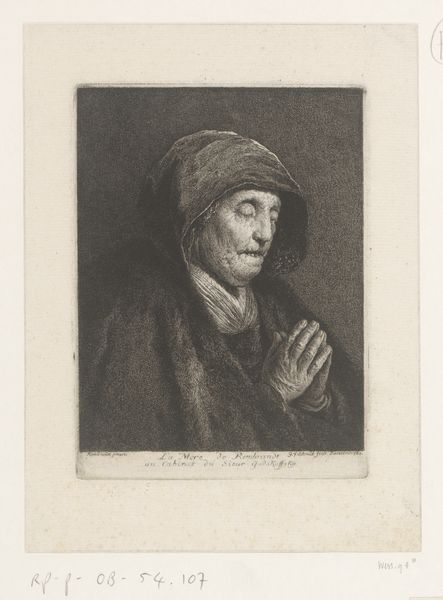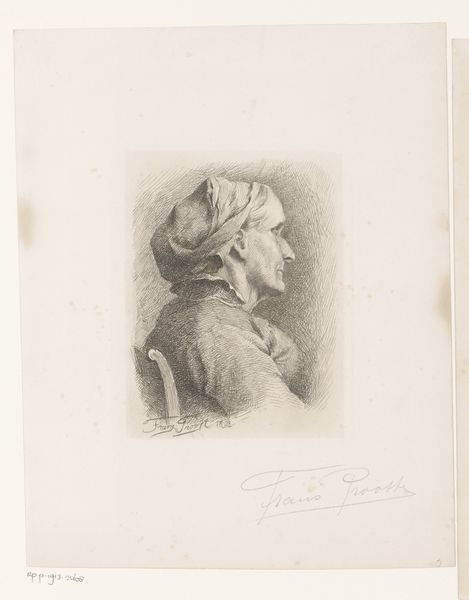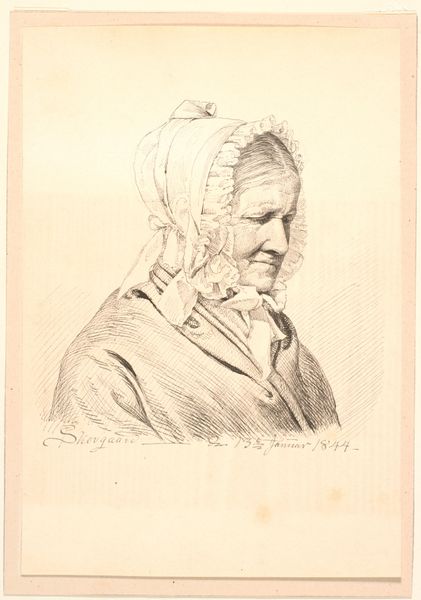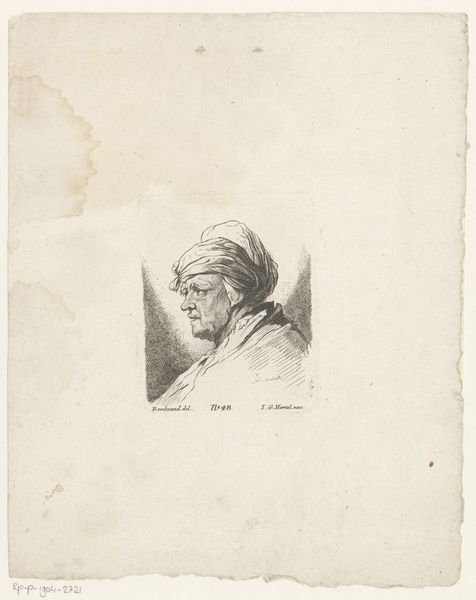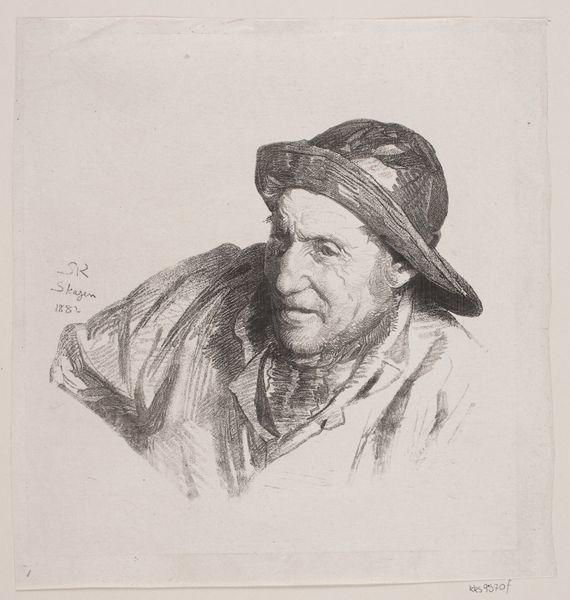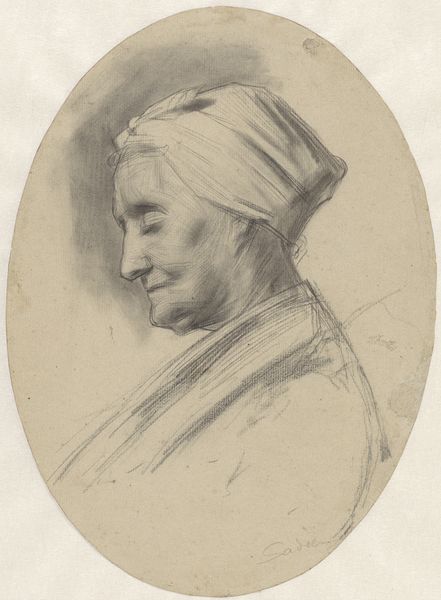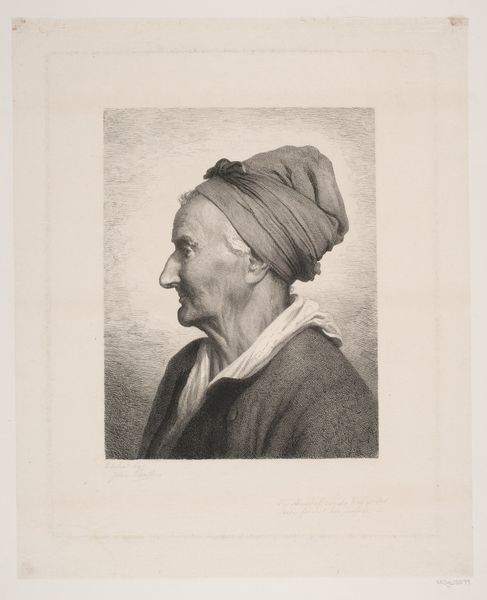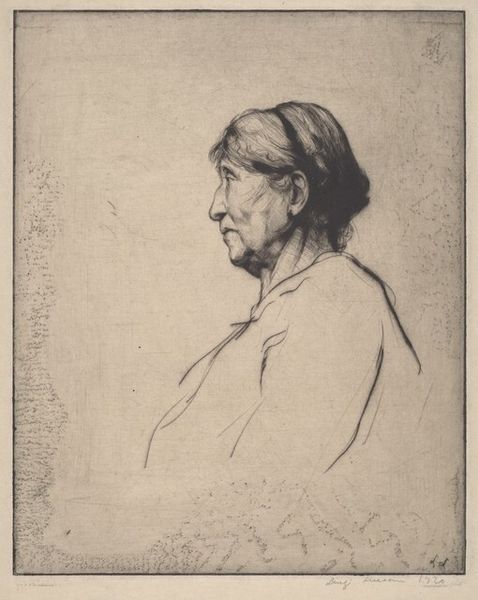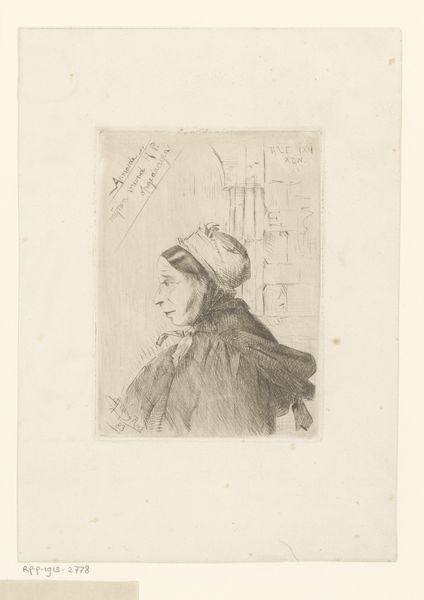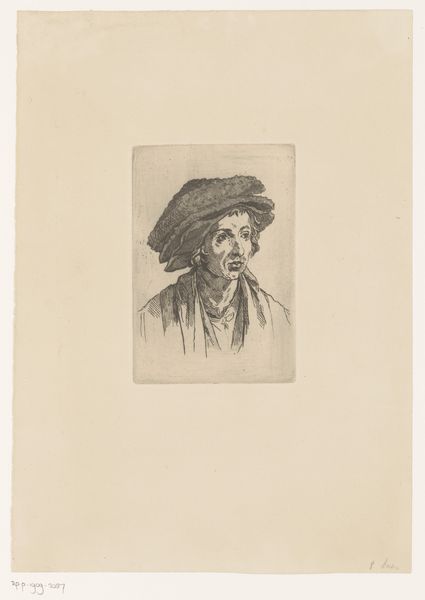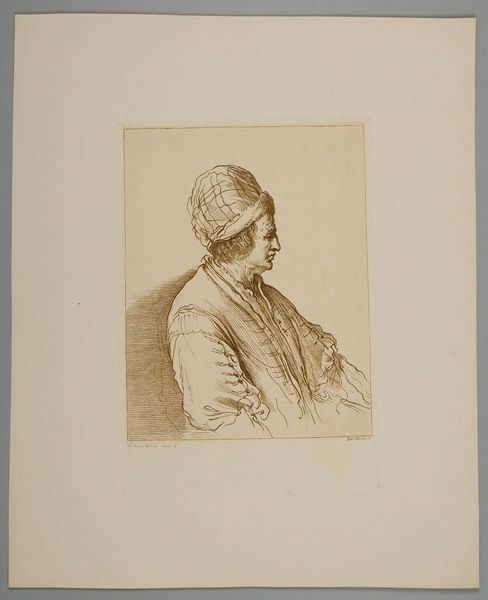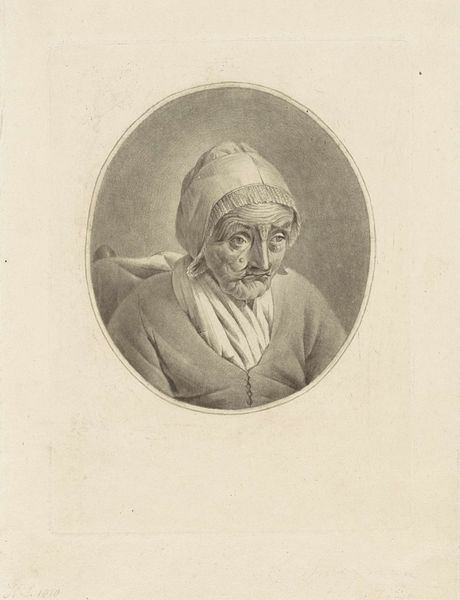
Dimensions: image, sheet: 13 x 9 7/8 in. (33.02 x 25.08 cm)
Copyright: Public Domain
Editor: Here we have Robert J. Wickenden's 1893 lithograph, pencil, and print work titled "La Mère Pannecaye." It’s a striking portrait; the woman’s gaze is so direct. What stories do you think are etched in her face? Curator: Exactly. This piece offers a potent commentary on aging and the visibility of women in the late 19th century. Wickenden portrays La Mère Pannecaye with an undeniable dignity, challenging the era's tendency to erase older women from representation. Think about how class might intersect with gender here. Editor: That's interesting. So, by depicting an older woman so directly, Wickenden might be making a statement about social visibility? Curator: Precisely. The details - her headscarf, the lines on her face - suggest a life of hard work, perhaps a working-class background. Wickenden isn't romanticizing poverty, but acknowledging the lives of those often overlooked. How does the medium—the lithograph, the pencil—contribute to this effect? Editor: I see what you mean. The pencil strokes seem so raw, almost like unvarnished truth. Curator: Consider this too: what does it mean for a male artist to portray a woman in this way during this time period? Is he offering a feminist perspective, or simply observing? Whose gaze are we seeing? Editor: That's a lot to consider! I didn't think this simple portrait held so much social weight. Curator: Art is rarely ever just observation. By analyzing these portraits, we uncover the complex dialogues about gender, class, and representation that were happening, and continue to happen, within our society. Editor: Thanks, I'll never look at a portrait the same way.
Comments
No comments
Be the first to comment and join the conversation on the ultimate creative platform.
